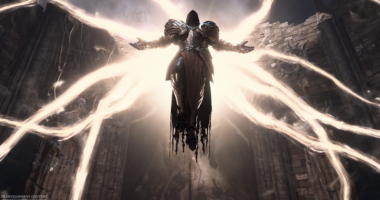THE DRACONID meteor shower reached peak brightness on Thursday, October 8 – but is still visible until October 10.
It’s best viewed as soon as it gets dark so you won’t have to stay up too late to try and spot some shooting stars.
How to see the Draconid meteor shower in the UK
The Draconids is the first meteor shower of the month.
This meteor shower can be seen in the Northern Hemisphere, including the UK and the US.
It will be active from October 6 to October 10 but will be at its best on Thursday, October 8 through to the early hours of October 9.
You should start looking for them anytime after dusk.
The Draconids is actually the only shower that’s best to watch just after nightfall and not too late in the evening.
Sometimes the Draconids only feature a handful of meteors per hour.
However, there have been occasions when stargazers have been treated to the sight of thousands of the shooting stars.
The meteors are often too small and fast to spot without a telescope.
If you do want to try and spot them then your best chance will be in a rural area far away from light pollution.
The shooting stars are coming from the direction of the Draco the dragon constellation.
This also happens to be the constellation that they’re named after.
They are created as the Earth passes through the debris from the 21 P/Giacobini-Zinner comet.
The Draconids are well-known for being unpredictable and no one can say for sure how many meteors people will be able to see.
The Orionids is the second meteor shower in October. It usually peaks around October 21.
What’s the difference between an asteroid, meteor and comet?
Here’s what you need to know, according to Nasa…
- Asteroid: An asteroid is a small rocky body that orbits the Sun. Most are found in the asteroid belt (between Mars and Jupiter) but they can be found anywhere (including in a path that can impact Earth)
- Meteoroid: When two asteroids hit each other, the small chunks that break off are called meteoroids
- Meteor: If a meteoroid enters the Earth’s atmosphere, it begins to vapourise and then becomes a meteor. On Earth, it’ll look like a streak of light in the sky, because the rock is burning up
- Meteorite: If a meteoroid doesn’t vapourise completely and survives the trip through Earth’s atmosphere, it can land on the Earth. At that point, it becomes a meteorite
- Comet: Like asteroids, a comet orbits the Sun. However rather than being made mostly of rock, a comet contains lots of ice and gas, which can result in amazing tails forming behind them (thanks to the ice and dust vapourising)
In other space news, four Nasa astronauts will board a Crew Dragon spacecraft on October 31 on a trip to the International Space Station
The US Space Force will one day send humans into space and could set up its own Moon base staffed by robots, a US General has confirmed.
And, Musk wants to send humans to Mars as early as 2024 aboard one of the huge rockets.
Do you like watching meteor showers? Let us know in the comments…
We pay for your stories! Do you have a story for The Sun Online Tech & Science team? Email us at [email protected]
This post first appeared on Thesun.co.uk
















